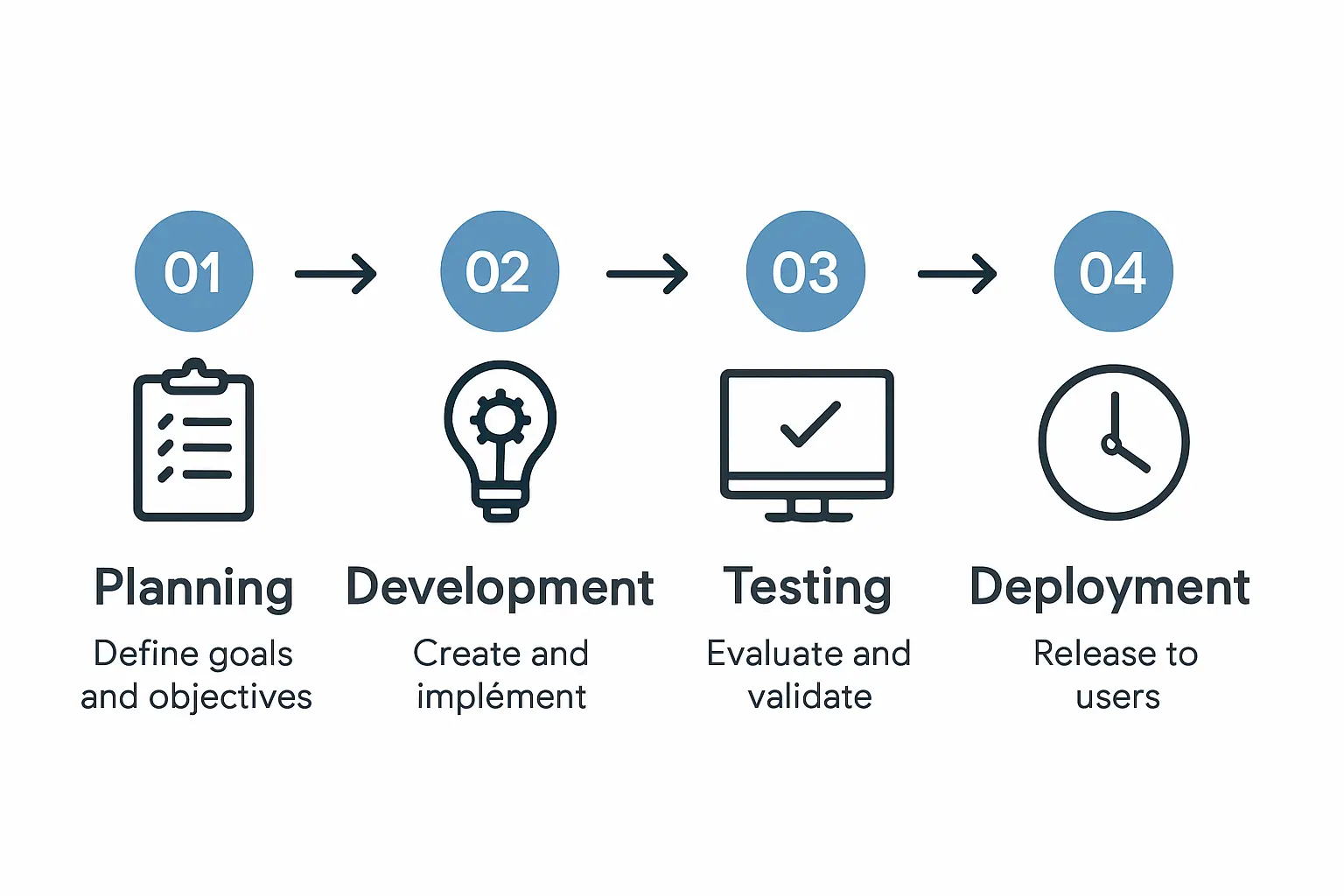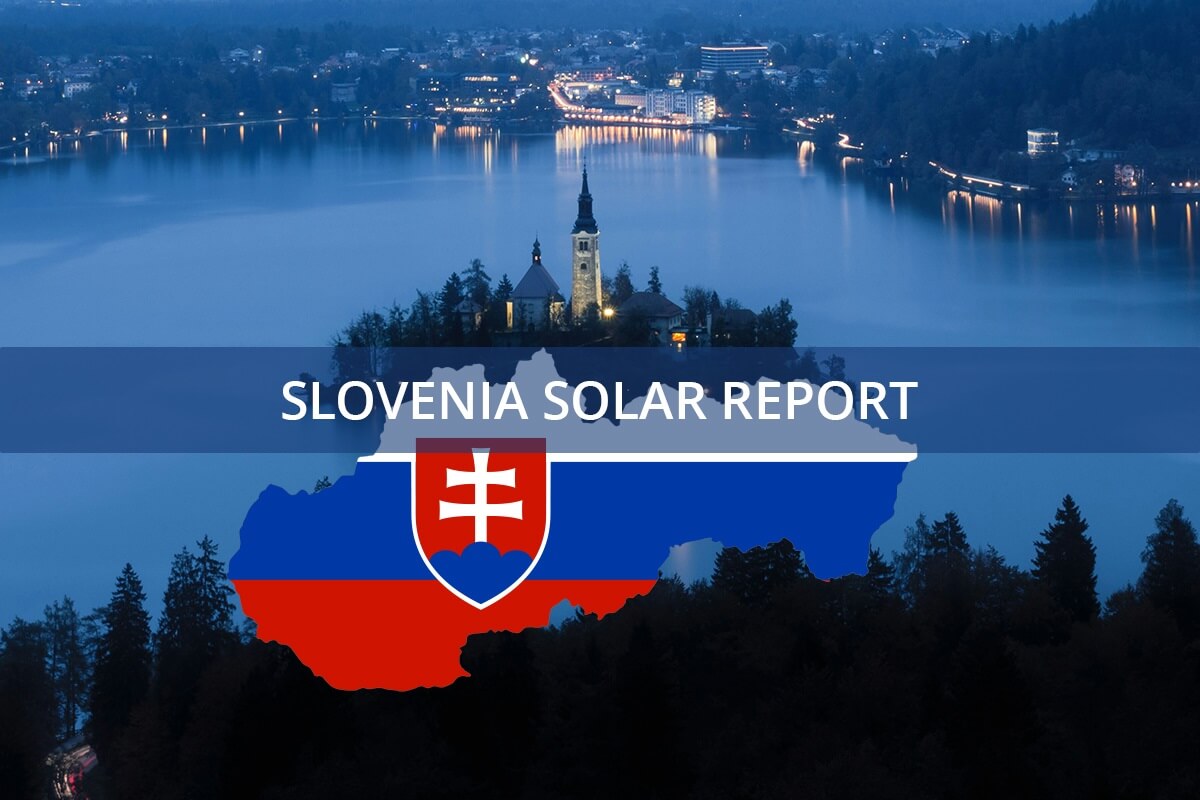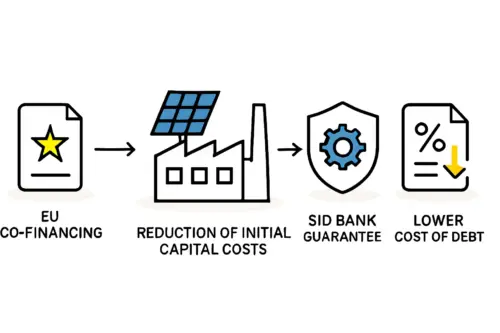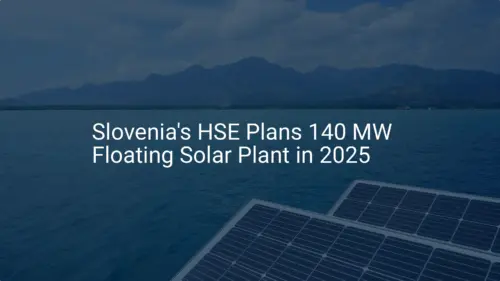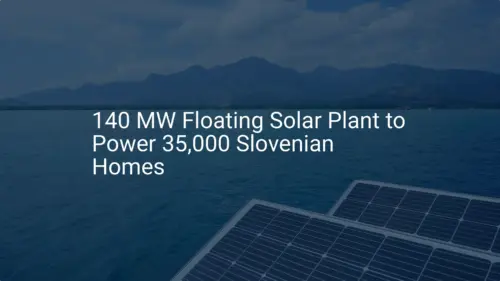Many entrepreneurs exploring solar module manufacturing often look first to established industrial powerhouses. However, strategic, well-integrated locations can offer a greater competitive advantage. Slovenia, at the crossroads of Central and Southeast Europe, is a compelling option for investors seeking a stable, EU-compliant base with excellent logistical infrastructure and a skilled workforce.
This overview examines the key factors for selecting a solar module factory site in Slovenia, covering its primary industrial regions, typical building requirements, and the administrative permitting process to offer a realistic timeline for business planning.
Why Slovenia? Strategic Advantages for Solar Manufacturing
Choosing the right country is the first critical step. Slovenia’s appeal rests on three key pillars: logistical excellence, a highly skilled workforce, and its stability within the European Union.
-
Logistical Hub of Central Europe: Slovenia’s modern highway network provides direct access to major European markets in Italy, Austria, Hungary, and Croatia. This is crucial for both importing raw materials and distributing finished solar modules across the continent.
-
Gateway to Global Trade: The Port of Koper is the largest container port in the northern Adriatic, offering a vital, efficient entry point for components sourced from Asia and a departure point for exports to markets in the Middle East and North Africa.
-
Skilled Industrial Workforce: The country has a long tradition of engineering and manufacturing. This heritage translates into a workforce with the technical proficiency required to operate and maintain the sophisticated production equipment essential to a modern solar factory.
-
EU Stability and Funding: As a member of the Eurozone and the European Union, Slovenia offers a predictable economic and regulatory environment. Projects aligned with EU green energy goals may also be eligible for various structural and investment funds—a significant consideration for any comprehensive solar panel manufacturing business plan.
Key Industrial Zones for Consideration
While a factory can be built anywhere with the correct zoning, establishing it within a designated industrial or business zone is strongly recommended. These zones come pre-equipped with the necessary infrastructure—such as high-capacity power lines, water access, and road links—significantly reducing setup time and initial investment.
The Styria Region (Maribor): An Engineering Hub
The region around Maribor, Slovenia’s second-largest city, is a well-established industrial center. It benefits from a strong manufacturing legacy and the presence of the University of Maribor, which ensures a steady stream of engineering talent. Its proximity to Austria and Hungary makes it an excellent location for businesses targeting Central and Eastern European markets.
Central Slovenia (Ljubljana): The Logistical Core
The area surrounding the capital, Ljubljana, is the country’s logistical and commercial heart. Its central location ensures maximum efficiency for nationwide distribution and sits at the nexus of Slovenia’s primary transport corridors. The proximity of Ljubljana Jože Pučnik Airport is another key advantage, facilitating international management travel and the shipment of urgent, high-value components.
Ready to make big Profits?
The solar Industry is Booming
WE HELP NEWCOMERS to the solar industry start their own solar module production line. Customers can make BIG PROFITS by selling modules and finding investors, without wasting money and time on things they don't need!
The Coastal-Karst Region (Koper): A Gateway to Global Markets
For manufacturers heavily reliant on sea freight, the region around the Port of Koper is the logical choice. Locating a factory here minimizes inland transportation costs for raw materials like solar glass, aluminum frames, and cells arriving by container ship—a decisive factor for optimizing supply chain efficiency.
Navigating the Physical Site and Building Requirements
Once a region has been chosen, the focus shifts to the specific plot of land or existing facility. A typical 20–50 MW solar module factory requires a building of roughly 3,000 to 5,000 square meters on a plot large enough for logistics, storage, and future expansion.
Key considerations for the physical site include:
-
Zoning Approval: The land must be zoned for industrial use (‘območje za industrijsko proizvodnjo’). Verifying this with the local municipality is one of the first due diligence steps.
-
Utility Access: A factory requires a stable, high-capacity electricity connection. Access to water for cooling and cleaning, as well as reliable high-speed internet, is also essential.
-
Site Accessibility: The location must accommodate heavy goods vehicles for delivering materials and shipping finished modules, making proximity to major highways a key consideration.
Investors have two primary options: constructing a new facility (a greenfield project) or retrofitting an existing industrial building. While retrofitting can be faster, a purpose-built facility ensures that the factory building requirements, such as floor load capacity and ceiling height, are perfectly matched to the specifications of the production machinery.
Understanding the Permitting Process: A Timeline for Investors
The bureaucratic process is often a concern for foreign investors. In Slovenia, the key document is the ‘Gradbeno dovoljenje,’ or construction permit. While the process is detailed and requires precision, it is also well-defined.
Experience from J.v.G. Technology GmbH turnkey projects shows that a realistic timeline should be factored into the overall project plan. The process generally involves several key stages:
-
Project Identification and Pre-Application (1-2 months): This phase involves initial consultations with the local municipality to confirm zoning and review preliminary project plans.
-
Project Design and Documentation (2-4 months): Architects and engineers develop detailed plans for the facility, which must comply with all national and EU building codes, including environmental and safety standards.
-
Permit Application and Review (3-6 months): The complete documentation is submitted to the relevant administrative unit. This is typically the longest phase, as various authorities (e.g., environmental, fire safety) must provide their consent.
-
Permit Issuance and Construction Start: Once all consents are obtained, the construction permit is issued, and construction can officially begin.
A conservative estimate for the entire permitting process, from initial design to the start of construction, is 6 to 12 months. Working with experienced local architectural and legal partners is essential to navigate this process efficiently and avoid costly delays.
Financial Considerations in Slovenian Site Selection
The final decision inevitably comes down to financial factors. The cost to start a solar panel factory is significant, and location is a major driver. Land prices and lease rates for industrial properties vary considerably between regions, with the area around Ljubljana typically being the most expensive.
However, these direct costs must be weighed against the long-term operational benefits of a location, such as lower transport costs or better access to a skilled labor pool. These variables are critical inputs for creating a robust financial model for the project.
Frequently Asked Questions (FAQ)
What is the typical land area needed for a 50 MW solar factory?
For a 50 MW facility, a plot of 10,000 to 15,000 square meters is recommended. This provides ample space for the 5,000 sq. m. building, as well as outdoor storage, truck maneuvering, and future expansion.
Are there government incentives for setting up a factory in Slovenia?
Yes, Slovenia offers various incentives for foreign direct investment (FDI), particularly for projects in manufacturing, technology, and green energy. These can include grants, tax credits, and support for job creation. Consulting with an agency like SPIRIT Slovenia is the best way to get the most current information.
Is English widely spoken in the Slovenian business community?
Yes, English is widely and fluently spoken in business, technical, and administrative circles, which greatly simplifies the process for international investors and their management teams.
How long does it take from site selection to the start of production?
A realistic timeline, assuming a greenfield project, is between 18 and 24 months. This includes site selection (2-3 months), permitting (6-12 months), building construction (9-12 months), and installation of the turnkey solar production line (2-3 months).
Slovenia offers a highly attractive and often overlooked environment for a solar module manufacturing facility. Success hinges on a methodical approach to site selection, a clear understanding of the permitting process, and a realistic assessment of timelines and costs. By prioritizing locations within established industrial zones and leveraging local expertise, investors can build a strong foundation for a competitive and successful European manufacturing operation.


